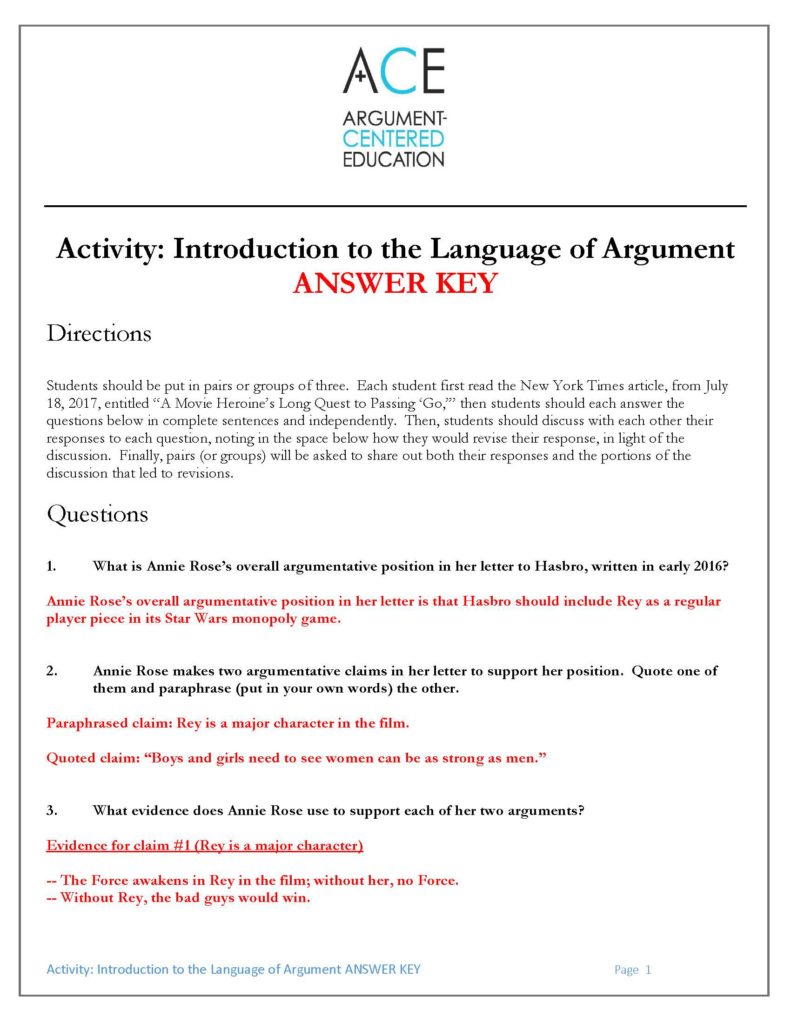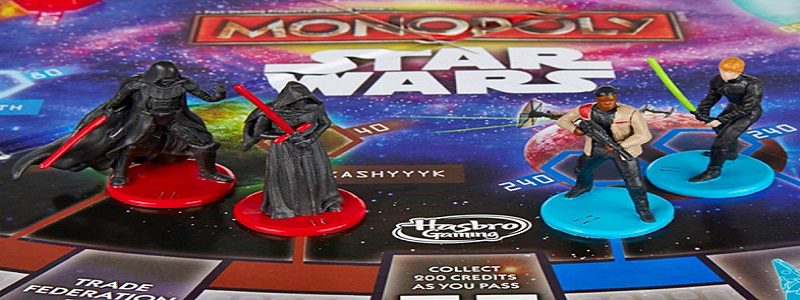
‘Star Wars’ Monopoly and the Language of Argument
Overview
One of the more under-acknowledged factors in improving student college readiness is the difficulty students have with the language of argument. The language of argument has a very wide Venn Diagram overlap with the academic discourse, the set of terms and rhetorical constructs privileged by standardized testing (like the NWEA, NAEP, SAT, PARCC, etc.), in college classrooms, and (it is generally believed) in the professional workplace. One of the paramount objectives of all college-readiness programs, and of all college prep schools, should be to equip all of their students with a deep understanding of and control over the language of argument.
When teachers in a college-readiness program or at a college prep school are using the language of argument consistently — when they are using the same names for the same components of argumentation across classrooms, disciplines, and grade levels — students are more likely to absorb this challenging discourse and are less likely to be confused or to conclude that argumentation is just another arbitrary, subjectively designed activity that teachers evaluate by how closely students comply with each individual teacher’s expectations. While Argument-Centered Education does not advocate language policing, schools are well served by professional training and support efforts that coalesce teachers around a single, agreed-upon language of argument. Even when educators choose to use one variation or another of the “standard” definition of a term, when they are aware of these norms and variations they can include this knowledge and their explanatory basis in their instruction.
For students, much of the way that they will assimilate the language of argument, when it is used and taught consistently across a school, is through working with it. Projects, activities, assessments, essays — they will all indirectly teach students the conceptual vocabulary of argumentation, and reinforce it over time. Still, there is a solid justification — especially at the beginning of the school year, and then later in the year when formative assessment indicates a need — for more direct instruction of argument discourse.
The Language of Argument Jeopardy
One activity that Argument-Centered Education partner schools have adopted is The Language of Argument Jeopardy. In this academic game, the class is divided into two halves. Each half has a captain or team-leader designated. If the classroom has a Language of Argument poster, it is either covered or students are told not to look at it during the game. The teacher uses the Language of Argument document by itself, or supplements it with a further set of defined terms, to ask two “players” — one from each side, chosen by the captains — Jeopardy-style answer-questions, to which the first student (of the two) who either hits her desk or raises her hand gets the chance to answer. For example,
Teacher: The two players, one from each team, come up to seat in our Jeopardy face-off chairs, please. Now, are you two ready? OK. The “answer” is: “A series of arguments arranged to advance or defend an overall position.”
Each of the two face-off student slaps her desk, but the first to do so is from the “silver” team (the name this half of the room got or gave itself).
Silver team student: What is a “case”?
Teacher: You are correct! The silver team gets a point. Captains, who are our next two players?
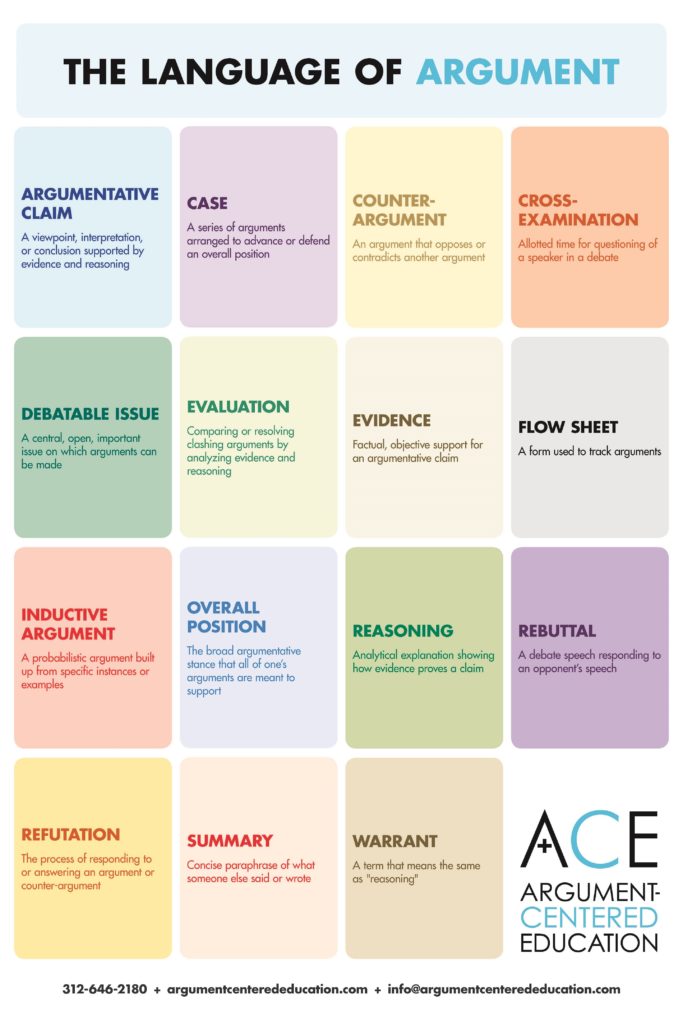
‘Star Wars’ Monopoly and the Language of Argument
Another activity that any argument-centered classroom can use — again, working very well at the beginning of the school year — is to pull out an article from the current media that focuses on some form of argumentation and to generate a series of questions for discussion that isolate argumentation terms implicated in the article. Note that the article does not have to be aligned with the course’s curricular content; this activity is designed to teach the common language of argument, not to teach course content or skill objectives through argument (as is the case with most of the argument-centered activities used in an argument-centered classroom). Also, while it is helpful for the article to be argument-rich, it doesn’t have to be the perfect specimen. As long as there is some argumentation within it — and this is a broad standard, one that will encompass a large percentage of informational text — you can make it work.
The article that I have worked with partner teachers on most recently is from the New York Times (July 18, 2017), and it is on a protest mounted by a young girl from Evanston, Illinois, against the lack of a game piece for the female character Rey, in a new edition of the Monopoly board game, one themed to the movie “Star Wars: The Force Awakens.” Annie Ross (the young girl) wrote a letter to the Hasbro company — organized quite cleanly around two arguments — to try to convince it to add Rey to the game. Hasbro responded to her letter, and the child’s family — the Goldmans — attempt to rebut the gamemaker’s counter-arguments.
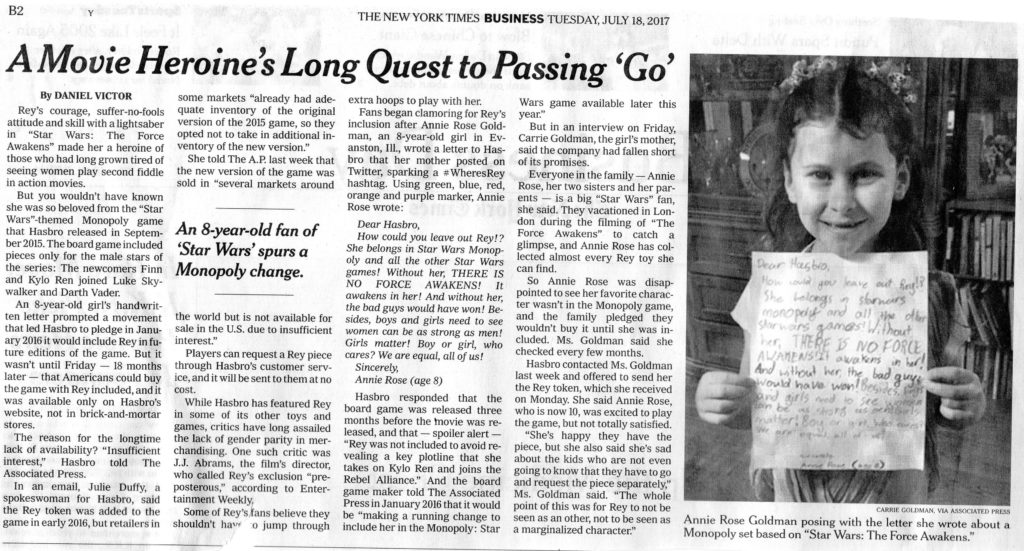
In the corresponding activity, students are first paired. They then answer the questions on the activity document, questions that focus on the components and terms of academic argumentation, as they appear in the article. Partners then discuss their responses, noting on their document where they would revise their response based on their discussion. The activity ends with a share-out, in which the teacher underlines and emphasizes a consistent, coherent, and fully assimilated use of argument discourse.
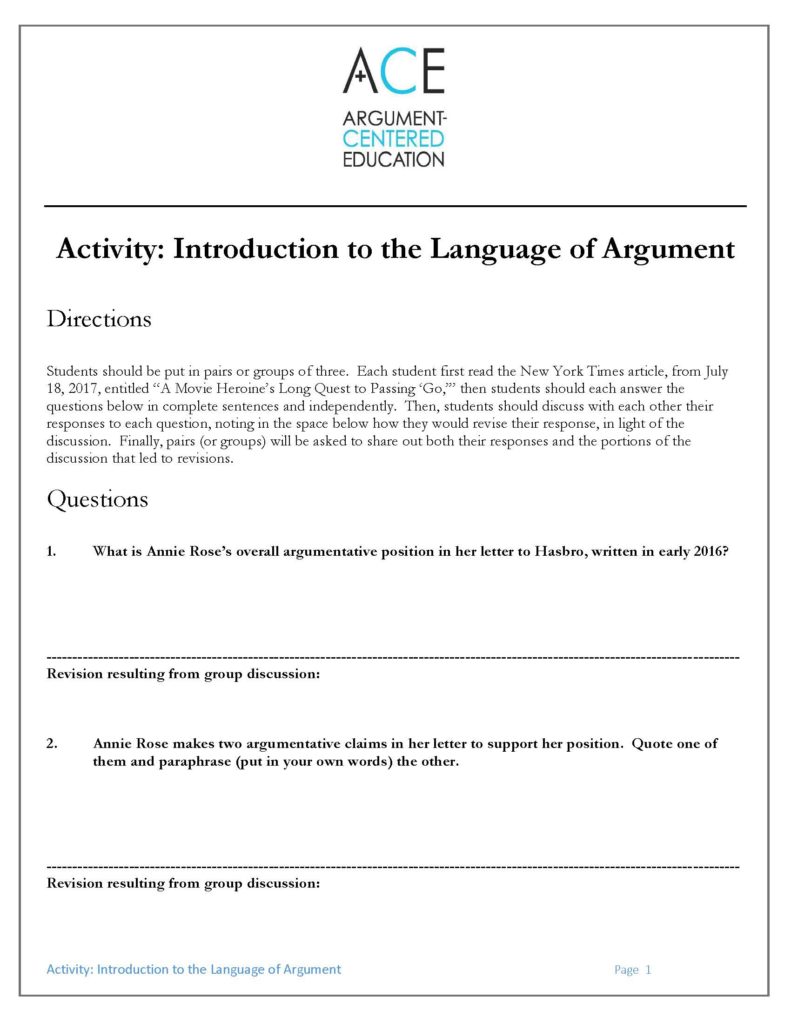
We created an Answer Key for the teacher’s use. You’ll note in reviewing the Answer Key that a more sophisticated, experienced reading of the article can find very rich, extensive, and even nuanced samples of argumentation in this short piece, each illustrating and helping students to fully understand and assimilate corresponding and relevant terms within the discourse and language of argument.
